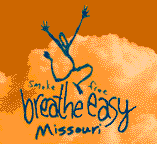How To Perform a Self Breast Exam
Hopefully you have read our previous blog on the importance of a self breast exam, now it’s time that you know how to perform one and what you should be looking for. The first and easiest thing that you can do is to get a visual idea of what your breasts look like. Things that you should observe include: shape, size, contour or symmetry, skin discoloration or dimpling, bumps/lumps, sores or scaly skin, discharge or puckering of the nipple.
There are three different positions you should be in when visually observing your breasts to get a good idea of these aspects. The first position is holding your arms behind your head. The second position is with your arms down at your sides. The third position is bending forward with your hands on your hips and shoulders turned in, and then with your arms hanging in front of you.
The visual exams as well as the hands-on exam are used in the first few months to allow you to know what is normal for your breasts. Once you are well aware of how they should look and feel, the exams that follow will enable you to detect abnormalities in your breasts.
The tactile examination can be done in a few different ways. You can pick what pattern you prefer and use it to check your breasts as well as surrounding areas. These areas include: the breast itself, between the breast and underarm, the underarm itself, and the area above the breast to the collarbone and across the shoulder. It is important to check these surrounding areas because there may be cancer in the lymph nodes near the breast.
Use the pads of your three middle fingers and vary pressure from light to medium to hard. Use your left hand to check your right breast and your right hand to check your left breast. You should always rub in small dime sized circles without lifting up your fingertips. The three patterns you can choose from are:
Spirals- beginning with large circles around the largest area of your breast, gradually make smaller circles as you reach the nipple.
Pie shaped wedges- think of your breast as being divided into wedges of a pie. Start at the nipple and rub small circles throughout an entire wedge. When finished, move to the next wedge until you have inspected your entire breast.
Up and Down- Think of your breast as being divided into vertical stripes. Begin with one side of your breast and rub small circles up and down each stripe. Do this pattern across the entire breast.
Once you have completed this exam, it is often helpful to do it one more time while lying down. Don’t forget to examine both breasts, and don’t forget to apply different amounts of pressure as you go. This exam is quick, easy, and it could contribute to saving your life. Do it once a month and tell a friend! Also make sure to speak with your doctor in order to make sure that you are using the best technique possible.

